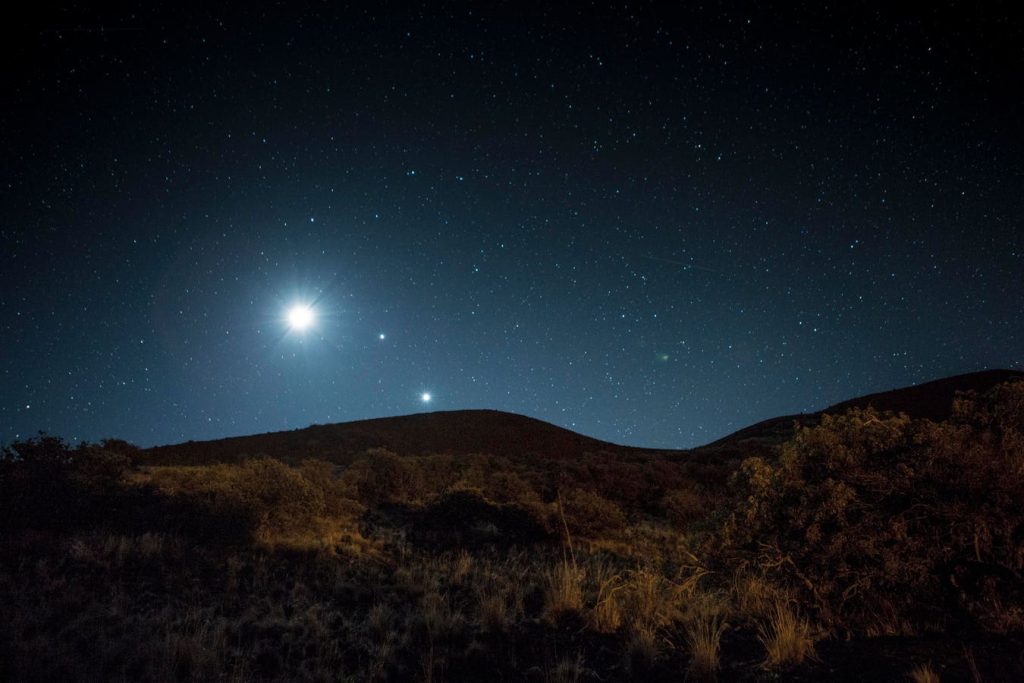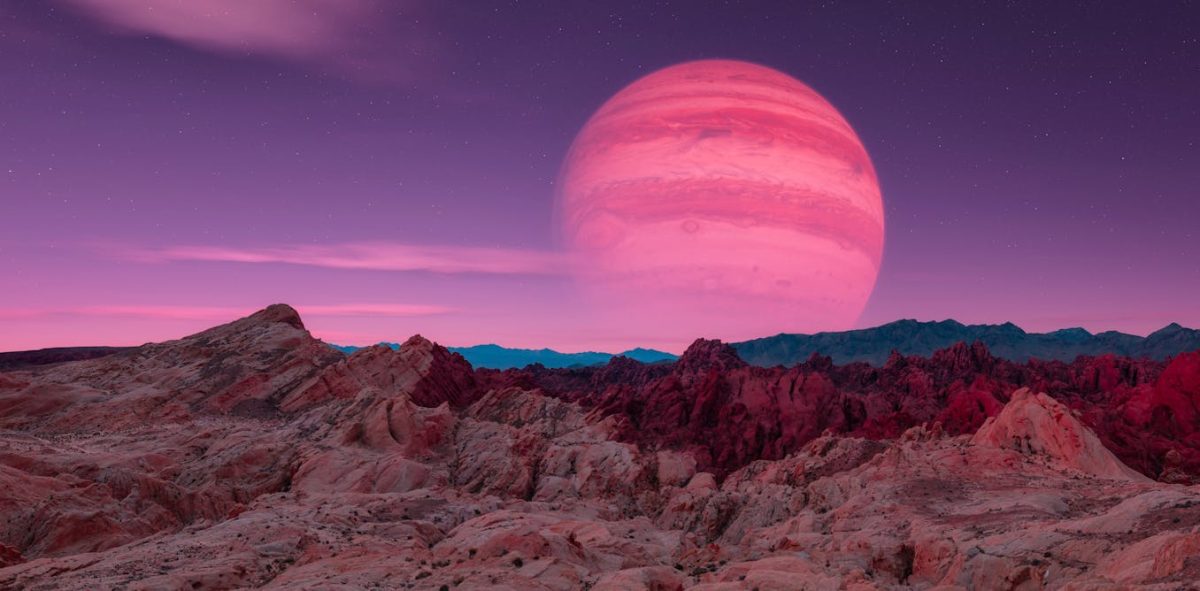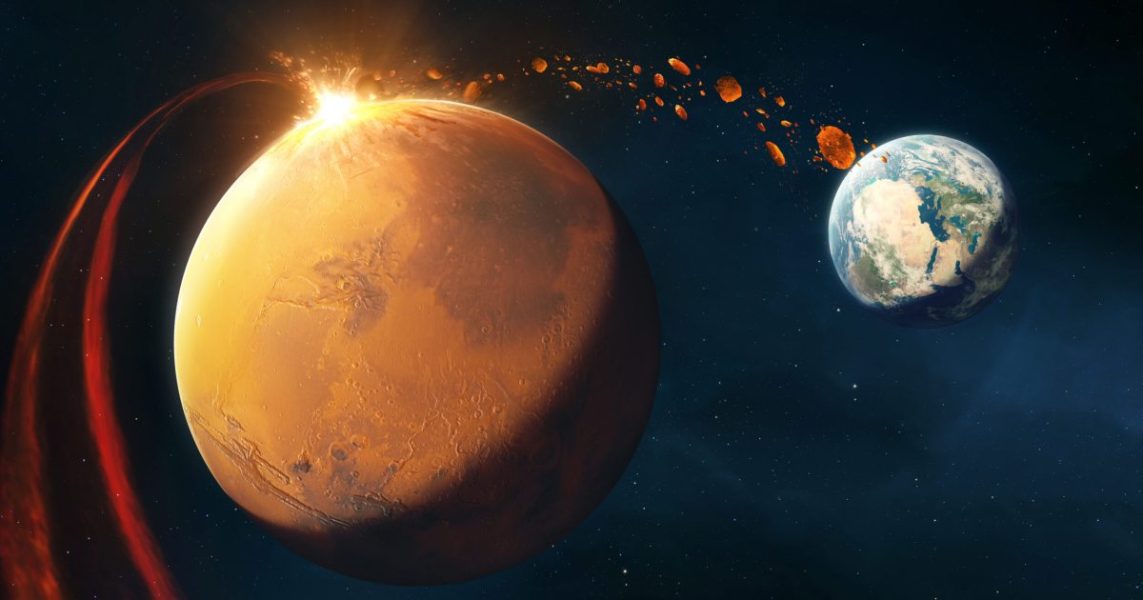See The Moon Visit Venus And Jupiter: The Night Sky This Week – Forbes

Formations of planets and stars rise over a dark mountain ridge.Each Monday, I pick out North America’s celestial highlights for the week ahead (which also applies to northern hemisphere mid-northern latitudes). Check my main feed for more in-depth articles on stargazing, astronomy, eclipses and more.We’re now exactly halfway between December’s winter solstice and the spring equinox in March — astronomical mid-winter — yet the Northern Hemisphere’s brightest stars continue to shine.If you can take your eyes off constellations like Orion, Taurus and the Pleiades, here’s everything you need to know about stargazing and astronomy this week:Monday, Feb. 3: Waxing Crescent Moon, Venus And Saturn As the sun sets, direct your gaze west-southwest; you’ll find a crescent moon, 35%-lit, gleaming brightly close to Venus, which will be above Saturn. Venus, Earth’s sister planet, will steal the show — it’s shining at magnitude -4.5 to Saturn’s +1.1. The contrast will get even more intense this month.Today, it’s the first quarter moon, the half-lit phase of the moon’s orbit. It’s a confusing term — why “quarter” if it’s 50% lit? That’s because it’s a quarter of the way through its monthly journey around Earth, from new moon to new moon. From tonight through the full moon in a week, the moon is referred to as being in a “waxing gibbous” phase. Until now, since the new moon, it’s been a “waxing crescent.”Wednesday, Feb. 5: Waxing Gibbous Moon And Pleiades Tonight, a 57%-lit waxing gibbous moon will pass through the Pleiades, the nearest open star cluster to our solar system at 444 light-years away. That’s something the moon will do every single month in 2025.Thursday, Feb. 6: Waxing Gibbous Moon and Jupiter As darkness descends, cast your eyes to the southeast to spot a waxing gibbous moon that is 68%-lit, hovering over two radiant points of light. The one closest to the moon is Jupiter, shining at a magnitude of -2.5, while Aldebaran — the brightest star in the constellation Taurus — lies below it.Sunday, Feb. 9: Waxing Gibbous Moon and Mars As night falls, look toward the east, where a 93%-lit waxing gibbous moon will be positioned between the golden-hued Mars on its right and the bright star Pollux ‚the brightest star in the constellation Gemini — on its left.The changing apparent size and phase of illumination of the planet Venus photographed between … [+] November 2019 and Mai 2020 with a Maksutov telescope from Mannheim in Germany.Venus has been at dichotomy — less than 50%-lit, as seen from Earth — since early January. It’s not intuitive, but as Venus gets closer to Earth — as it is doing currently — it will be brighter as its phase decreases. By Feb. 14, it will seem a slim crescent but shine the brightest of its current apparition. Why? It will be much closer, and its global clouds will make it extremely reflective.Venus does not follow an annual visibility pattern from Earth. Because it is an inner planet, it orbits the sun more swiftly than Earth — completing over 13 orbits for every eight by our planet. This results in a cycle of visibility that reoccurs every eight Earth years.The times and dates given apply to mid-northern latitudes. For the most accurate location-specific information, consult online planetariums like Stellarium.Wishing you clear skies and wide eyes.One Community. Many Voices. Create a free account to share your thoughts. Our community is about connecting people through open and thoughtful conversations. We want our readers to share their views and exchange ideas and facts in a safe space.In order to do so, please follow the posting rules in our site’s Terms of Service. We’ve summarized some of those key rules below. Simply put, keep it civil.Your post will be rejected if we notice that it seems to contain:User accounts will be blocked if we notice or believe that users are engaged in:So, how can you be a power user?Thanks for reading our community guidelines. Please read the full list of posting rules found in our site’s Terms of Service.






